$30 million Mahurangi action plan
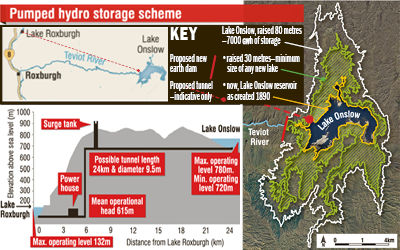
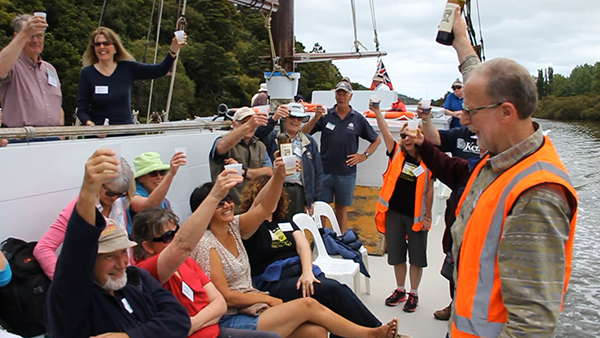
Toasting Auckland Council: While there had been robust advocacy for, and resistance to, dredging being included in the long-term Mahurangi Action Plan, the toast proposed to Auckland Council aboard the Jane Gifford was responded to unreservedly. One of the council officers said later, admitting to tears in the eye, that this—spontaneous and generous acknowledgement—never happens. image Mahurangi Matters
$3 million over 5 years seemed, for a moment there in 2004, as though all the Mahurangi Harbour’s Christmases had come at once. Even in today’s money, $9.06 million is more than twice the 2004 amount, but nor, back then, does it mean that the Mahurangi’s sediment woes are over.
What is different, is that the $4.06 million component for Mahurangi River dredging, in addition to its environmental benefit, is enormously strategic economically, and is community led. In 2004, in contrast, the $3 million, 5-year-riparian-margin-protection kickstart was an imposed action plan. Welcome as the riparian protection funding was, the Auckland Regional Council proved to be strongly resistant to Mahurangi River dredging being in the same tent. As recently as during the Mahurangi Action Plan’s 10 anniversary celebrations, Peter Thompson was discouraged from advocating for restoring the navigability to the Mahurangi tidehead town of Warkworth.
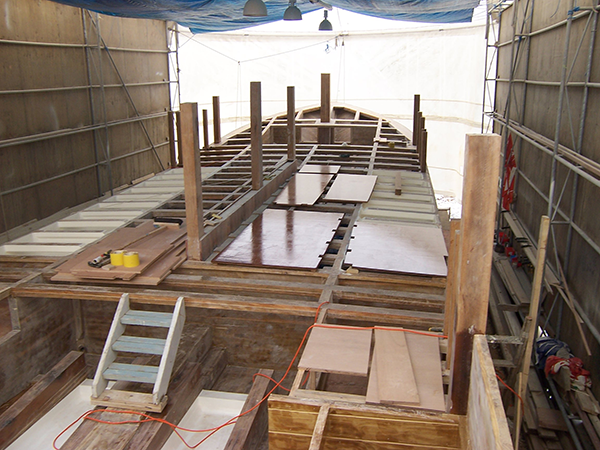
Mahurangi Restoration at Scale: Before Peter Thompson got to get the satisfaction of taking the Jane Gifford up and down the Mahurangi River, years of toil, tears and sweat, much of it his, were expended by the community in its rebuilding. Now, thanks to the government’s Jobs for Nature funding, the Mahurangi harbour and river’s elevated sediment accumulation rate is to be further restored, picking up where the Mahurangi Action Plan left off. This time, however, restoring the navigability of the river is a major part of the project, as it had deserved to be, in the 2004– action plan. image Lyn Bergquist
The irony could not have been crueller. The anniversary celebrants were being conveyed past oyster farms, some of which, and parts of some, were so badly derelict—and had become so, on the regional council’s watch—that dredging was, and still is, the only solution. But further, the vessel used, the scow Jane Gifford, had only been saved, and returned to her home port, by the colossal industry of Peter Thompson. And finally, the viability of the historic scow’s return to its former home port of Warkworth was rapidly diminishing due to acceleration of the river’s already elevated sediment accumulation rate. This was reducing the Jane Gifford’s operating window from the tidehead town, to a shorter and shorter period of the tide.
The community, earlier, had stuck to its guns, and dredging was already a line item in the Mahurangi Action Plan: A Catchment Plan 2010–2030, albeit couched as restoring the navigability of the Mahurangi River. Generally, the community had succeeded in convincing the Auckland regional and Rodney district councils that the 2010–2030 plan should, at core, be holistic. It may be the good things take time, but the near-inhuman perseverance all too often required results in the proponents being so worn down, physiologically, psychologically, and financially, that worthy projects fail to come to fruition. That was almost the fate of the Mahurangi River Restoration Trust’s vision. That it was not, is due to the current need for shovel-ready, covid-19-recovery projects. That government can be distributing recovery largess during the worst pandemic in a century, of course, is only possible because of its crucial role in achieving the covid-19-free environment that prevails in Aotearoa.
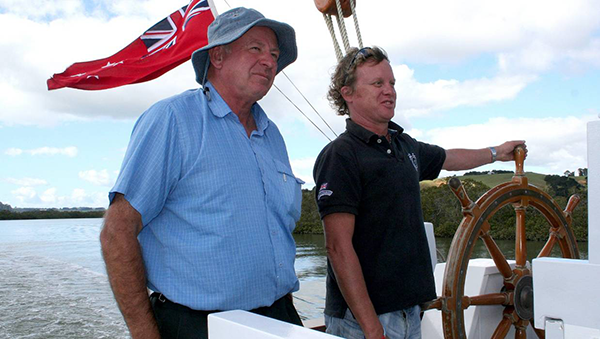
Well-Deserved Hard-Won Success: On a childhood Mahurangi River trip, Peter Thompson listened to his father and a colleague discuss how, if it was to continue to be navigable, the river would inevitably require dredging. That that work is now being funded, during the covid-19 pandemic, is a story richly deserving a book of its own, spanning the lives of a remarkable father and his remarkable son. image Mahurangi River Restoration Trust
The same covid-19-free environment and need for recovery projects has permitted work to restart on Mahurangi Harbour sediment generation mitigation. However, the $5 million for the 2020–2023 land restoration programme, applies, as it should, to the broader Mahurangi region:
The funding possibly has a significant pest suppression emphasis, in contrast to the 2004 riparian-margin-fencing-and-planting-focused $3 million. Pest suppression, however, is an often-neglected aspect of indigenous vegetation restoration. Exotic pests, famously rabbits, can devastate many indigenous species, expensively purchased and laboriously planted, overnight.
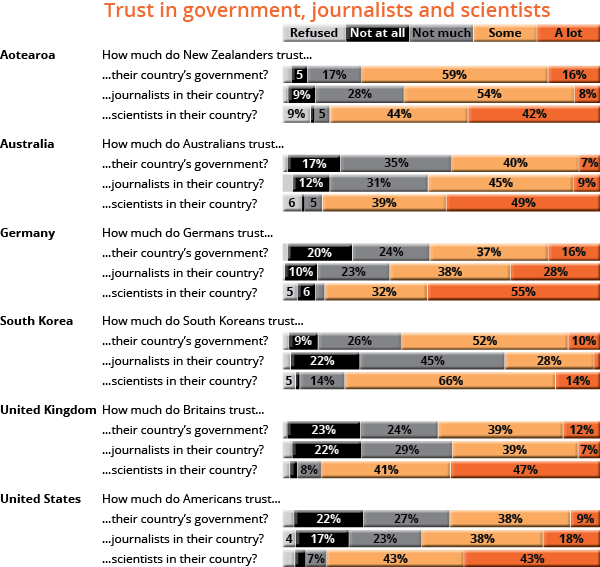
No Fan of Journalists: South Korea, amongst these half-dozen countries, beats even the United Kingdom for its low regard of journalists. But quite why 54% of New Zealanders could muster “some” trust but only 8% ‘a lot”, begs explanation, given the 10 percentage-point-higher regard indicated by Americans, for their journalists. Research New Zealand’s latest polling has the difference between politicians and journalists at 1 percentage point. chart Mahurangi Magazine | data Wellcome Trust
With the $9 million boost for the Mahurangi region, comes an opportunity for the Mahurangi community to begin building an enduring post-2010-amalgamation framework. Much energy was been squandered in serial attempts to secede from Auckland Council, which were unrealistic and doomed from the outset. Regardless of the wisdom of the one-council solution imposed by the cloth-eared Royal Commission on Auckland Governance, the wider Auckland region was clearly in need of more cohesive planning than the five-city, two-district, one-regional-council model was delivering, pre-2010. The Mahurangi Magazine proposes that the Mahurangi community holds the solution to Mahurangi governance deficiencies in its own hands. It has a meeting place, the Warkworth Town Hall, magnificently restored, and, incidentally, largely at Auckland Council expense. A monthly Mahurangi ‘council’, where the community discussed and agreed projects and priorities, would ultimately make life much easier for Auckland Council and its Mahurangi governance partner, Ngāti Manuhiri.
Easier, that is, for those whose ethos is democratic. Power is addictive, and administrations such as local councils, much less those of Auckland-region scale, can be resistant to the legitimate participatory aspirations of their citizens. Success of the endeavour would turn on how readily citizens embraced the opportunity to be a blessing to Auckland Council, rather than a curse, and, in particular, how willing the community was to work with its council, rather than remain at a safe, insult-lobbing remove, or worse. The challenge would be to attract a sufficiently eloquent and charismatic person to lead the Mahurangi community council. Given the tribulations, particularly of New Zealand’s National party, political leadership, at national or local level, struggles to attract wholesome candidates, much less candidates who are eloquent and charismatic.
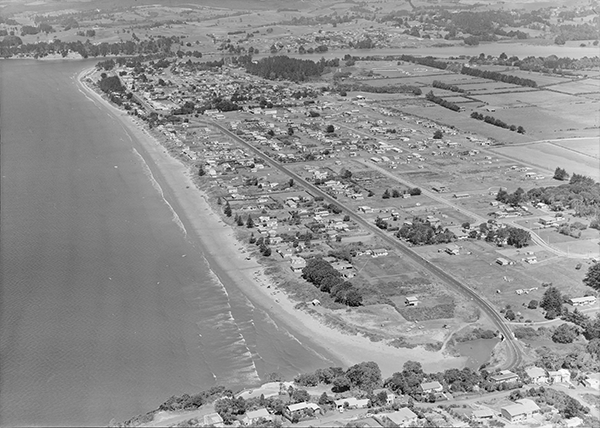
Hundred-Year Beach: Between its unbridled growth as a second-home seaside escape in the late 1950s, and 2050, sea-level rise will have irreversibly disrupted coastal settlements such as these. The new shoreline will, around an increasingly indented coastline, be constantly retreating, and muddy. Those born into that era will, provided that life is not too beastly for education and reflection, despair that their ancestors presided over the demise of beaches—except where geology had left dunelands of sufficient magnitude to feed centuries of multi-metre sea-level rise. aerial photography Whites Aviation
The latest 1 News – Colmar Brunton poll has Prime Minister Jacinda Ardern enjoying a 64-percentage-point net trust advantage over National’s leader-of-last-resort, Judith Collins. In April, the same pollsters reported a 29-percentage-point jump in trust for the government to make the right decisions on covid-19, to 88%. The relatively high levels of trust by New Zealanders in their governments, the country’s isolation, and Ardern’s exemplary leadership has made the Aotearoa a standout. This is unlikely to rub off onto Collins. Research New Zealand’s 23–27 July polling has trust in politiciansBoth members of parliament and local council members at only 22%. It appears that a higher trust in governments than in politicians is a worldwide phenomenon, and similarly between media publications and journalists. What is begging to be explained is the relatively low regard for journalists reported in Aotearoa—a just 1-percentage-point-higher-regard than for politicians. If the Mahurangi Magazine could be so bold, it suggests that mainstream media journalists improve their research, and the acuity of the questions they ask, such as:
There are 12 new confirmed cases and one probable case of covid-19 reported in the community today. Also reported are 351 cases still termed probable, including 274 dated April. Why has it not been possible to confirm or exclude most of those 351 cases?
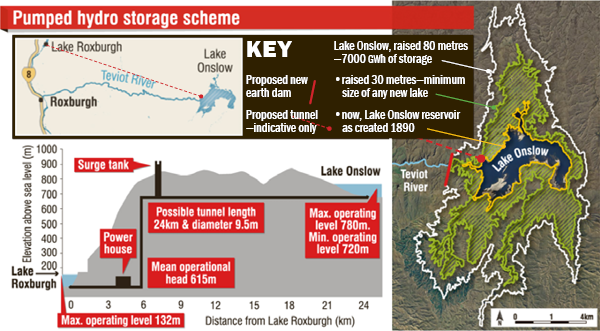
This, is Climate-Action Mobilisation: Perhaps covid-19 focusses the mind, but it has taken 15 years for the New Zealand government to investigate a concept that, if built, would make more than a blind bit of difference to the country’s greenhouse-gas emissions. As the world’s largest pumped hydro scheme, endowed by topography, hydrology, and geology, it would be the jewel in the crown of an actual 100% pure New Zealand energy-tourism industry. graphic Otago Daily Times – Concept Consulting | tunnel route Mahurangi Magazine
Prime Minister Narendra Modi, meantime, is odious company for Acuity Training to have included with Prime Minister Jacinda Ardern, in its list of “most eloquent world leaders”. Aside from his unapologetic popularism, he pedals covid-19 quackery as shamelessly, albeit not quite as crudely, as Donald Trump. But what is more egregious about Acuity Training’s headline-grabbing list, is the undiscerning mainstream media assumption that the list has standing, or history. Most headlines assume that it is an annual list, helped, in some cases, by the Acuity Training’s paired finding of former US President Barack Obama to be “the most eloquent and effective communicator” of the last decade. While few would argue with Acuity Training’s top placing of Jacinda Ardern, many should challenge the mainstream media to do better when reporting an unpublished report that appears lack rigor, and, prima facie, primarily be an exercise in training-industry self-promotion. Meantime, while Modi basks in his top-three-most-eloquent-world-leader status, his citizens have racked up nearly a quarter of the world’s new infections, during this last week. Even second-placed Angela Merkel’s eloquence hasn’t spared Germans from repeating the pain of exponential covid-19 infection rates.
The dysfunctionality on display in the current standoff between the chair of the Rodney Local Board and the Rodney Ward Auckland councillor, over road sealing, illustrates how far the region’s ten-year-old, compromise, governance arrangements have failed Kaipara kiand Mahurangi communities. But, just as the economy was immaterial without containing community transmission of covid-19, so too is the Mahurangi Action Plan academic, without immediate climate-action mobilisation. The total loss of the two Canadian ice caps captured on 14 July is a sharp reminder that 13 metres of sea-level rise is already locked in. East Antarctica ice-sheet collapse alone is imminently primed to contribute 3 metres, at which point navigability of the Mahurangi River would be augmented very considerably.
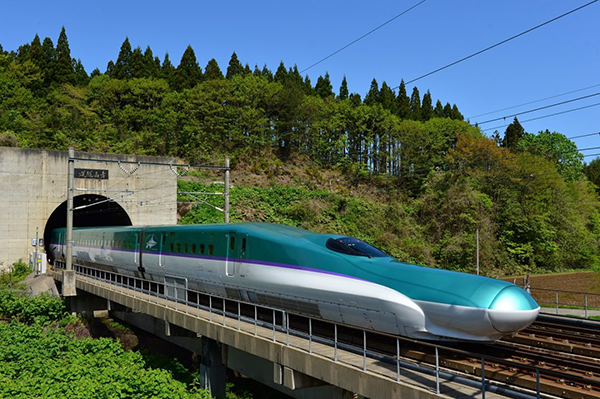
Accelerated Cook Strait Electrification: Although the high-speed Shinkansen trains can’t travel through the Tsugaru Strait tunnel at anything close to their 320-kmh top speed, until the tunnel’s operation is modified, at present they run through it at 140 kmh. A tunnel is the only means of grid-powering a Cook Strait crossing. It would only be less-than-13-kilometre-longer overall than the Tsugaru Strait Seikan Tunnel, with the undersea section about 3.8 kilometres longer. An equally zero-carbon option is a pair of nuclear-powered ferries—and magnificently scenic—but given New Zealand’s anti-nuclear-power fetish, capital and energy is more likely to be splurged on hydrogen-powered… image Japan Rail and Travel
There is a route out of the global governmental dysfunction, and one which Aotearoa can help lead by example, on the back of its world’s-lowest covid-19 infection rate. Rapid ramp-up of zero-carbon-emissions energy is essential if a survivable climate is to be salvaged. New Zealand’s quarantine czar and energy minister, Dr Megan Woods, has committed $30 million to develop a business case for a 5-terawatt-hour5 trillion watt-hour pumped hydro storage “battery” that would make Aotearoa the global zero-emissions exemplar. While free-marketeers, and many Green Party voters, will loathe everything about the Lake Onslow scheme, a survivable climate and the environment trumps capitalism and photovoltaic panels.
The illustrious list of potential environmental positives of University of Waikato’s Dr Earl Bardsley’s concept, including the better management of South Island scenic lakes, should have every New Zealander swell with pride that one of their number has the brilliance and courage to visualise zero-carbon energy on this scale. Not that the scale—or rather, the cost—is enormous. The estimated $4 billion involved is just two years’ budget of the motorways-to-nowhere-preoccupied New Zealand Transport Agency—the country’s major, unrepentant generator of avoidable greenhouse-gas emissions. Those whose idea of utopia is a solar panel on every rooftop will be bereft at the prospect of lowered wholesale rates of energy, thanks to the zero-carbon 5-twh Lake Onslow “supercapacitor”. But not only would the solar-panel-centric route have increasingly plunged more and more people into energy poverty, it would have prevented the at-scale electrification of carbon-emitting dairy factories, railways, roads, ports and airports essential, if Aotearoa is to slash its share of the greenhouse-gas-emissions.
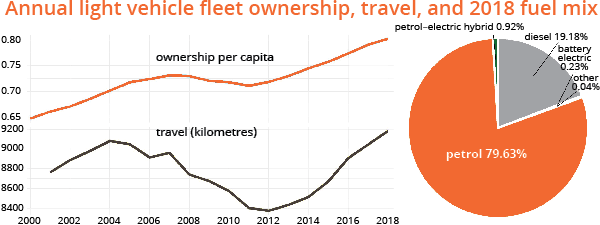
More of Them Not Going as Far: Aotearoa is richly endowed with zero-carbon energy, but with their cows and cars, New Zealanders headed into territory unamenable to the achievement of an exemplary greenhouse-gas emissions profile. But by taking stock of the big picture, and going early and going hard, a combination of scaling up zero-carbon energy production and strategic accelerated electrification, rather than the virtue-signalling variety, Aotearoa can yet build on its covid-19 credibility, and lead the world in meaningful climate-action mobilisation. While ev evangelists will protest that their segment is growing rapidly, since these 2018 figures to July this year, that has been by less than 0.2 percentage-points of light-fleet ownership numbers. graphic Mahurangi Magazine | data Ministry of Transport
Appallingly,or at least, parochially, or both! one of, if not the, sentiment most on display since the government committed to seriously study pumped storage, is that South Island electricity shouldn’t be transmitted to the North Island. The opinion that the South Island should keep its hydro to itself was the bane of State Hydro-Electric Department chief engineer Billactually, MG Latta, and what the initials stand for or where the Bill came from, the Mahurangi Magazine would love to know Latta’s career. It dogged him from the moment, 70 years ago, he produced his comprehensive report on North Island electricity needs, which spanned coal-fired, geothermal, nuclear, tidal, and wind, and the Cook Strait transfer of South Island hydro power. There are transmission losses of course. These appear to be in the order of 8%, for the high-voltage-direct-current link between Benmore Dam and Lower Hutt. Some say the electricity freed up when Tiwai Point closes should be used produce hydrogen to sell to a world apparently gagging to pay a premium for anything that ticks the renewable box. But not only do current processes involve 20% conversion losses, the cost of transporting the lightest element in the periodic table is legendary—shipping cryogenically liquefied hydrogen, at −252.8°, from Tiwai Point would not be a huge advance from exporting South Island hydro in the form of smelted alumina. Meantime, Fonterra dries its milk by burning coal, and proposes to improve upon that by burning that miracle-engineering and carbon-sequestering material: planted-forest wood.
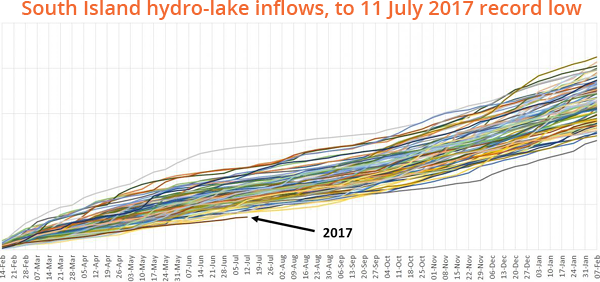
Inflows Far from Infinite: South Island hydro-lake inflows set a record low, in 86 years of data, as recently as July 2017. Those who claim that there is sufficient generation to power 4 million evs are wilfully ignoring the greater need for strategic accelerated-electrification options, such as double-source trolleybuses and trucks. graph Energy Link | title Mahurangi Magazine
Claims are periodically made for eye-watering transmission losses, for power dispatched from the South Island to the North, but verifiable figures are elusive, online. The Ministry of Business, Innovation and Employment 2018 energy report puts total grid transmission losses at 3.2%, and Greg Sise estimates that even if all the Tiwai Point energy is diverted to the North Island, that average loss would only increase by 1 percentage point. He also states:
Few comprehend that climate-action mobilisation means massive electrification, particularly of transport. The Interim Climate Change Committee’s Accelerated Electrification report states:
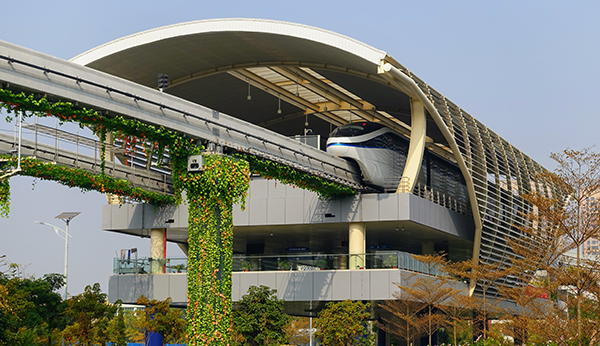
Build Your Dreams on Waiheke: The immense Chinese battery company that was nearly bankrupted by changes of government ev policy is the byd of the byd adl Enviro200ev buses, six of which will operate on Waiheke Island. Despite initially being a battery manufacturer, byd—Build Your Dreams—is betting the farm, not on battery-powered evs, but on driverless grid-powered monorail—with battery backup, should an outage otherwise leave passengers stranded between stations. Something to contemplate while aboard a fossil-fuelled ferry to the island, the electrification of which will be fiendishly expensive. image Kyle Field | CleanTechnica
Gravely, but unsurprisingly, the interim committee proceeds to demonstrate that its notion of accelerated electrification is pretty much everybody driving an ev. If this were the oil-shocking 1970s, a car-centric future would be an entirely reasonable prospect to recommend. But more evs simply means more congestion and more $2 billion a year on roads, unless those electric vehicles are double-source trolleybuses. In Accelerated Electrification, evs get 58 mentions, electric buses 1, and double-source trolleybuses, zero. The elegance of the double-sourcedouble-source, in the context of trolleybuses: grid- and battery-powered trolleybus is that it doesn’t need to purchase, at ruinous expense, nor cart around the weight of, a battery bigger than it needs to operate on the unreticulated sections of its route. Why it should surprise people that batteries are costly and problematic when their laptop struggles to operate unplugged for more than a few hours, or their phone, for more than a day, is curious, and instructive.
For New Zealanders raised with due reverence for their pioneering hydro engineersthe author was delivered by the GP offspring of one of engineers, Lloyd Mandeno, the notion of using hard-won electricity to pump water back uphill, rather than rely on the sun to replenish storage lakes via rainfall, probably seems altogether preposterous. But hydro lake storage is not finite. As recently as a week in June, a quarter of the energy transmitted across Cook Strait was southward, and in July 2017, a new record low inflow was recorded into the southern hydro lakes:
Which explains why South Island hydro output has fallen, the hvdc (inter-island) link is running southward almost all of the time, the North Island thermal generators are running flat out and spot prices are running high.
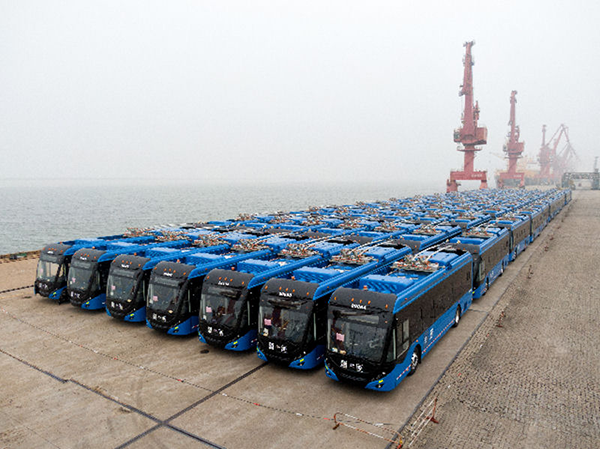
Pumped Double-Source Trolleybus Solution: Double-source trolleybuses, backed by Lake Onslow pumped-hydro storage, and the electrification of Auckland Transport’s 1360 diesel-powered buses could be seriously and sustainably accelerated—ahead of 2065, at the current 30-per-year electrification rate. Because double-source trolleybuses have a significant range under battery power alone, they could be driven directly between wharf and depot, sans catenary. Energy deployed primarily via grid rather than battery, the proposed 5-terawatt-hour Lake Onslow pumped hydro scheme would allow Aotearoa to accelerate the electrification of not just its light vehicle fleet, but pretty much everything currently fossil-fuel powered. image Infobus
If New Zealand’s total installed hydroelectric generation ran continuously at full capacity, it would produce 48.2 terawatt-hours of energy. This is about a third of the country’s total energy consumption, and only three quarters of the energy used for transport—about half of which is used by cars. It can probably be trusted that Dr Woods is not misled by Ministry of Transport propaganda:
Zero-carbon grid electricity is too important to be blown by the “team of 5 million” on their 4 million light vehicles, leaving nothing for the grid-electrification of trains, trucks and buses, nor for airports, ports and dairy factories. Before blindly committing to switching the 99.5%-fossil-fuelled light-vehicle fleet to electric, as with pumped hydro storage, the business case for better uses of finite road space needs to be developed. A way off the 1950s-style motorways hamster wheel—for example, double-source trolleybuses and trolley-trucks—is in dire need of implementation.
New Zealanders should offer up a prayer of gratitude for a government with an adult in the cabinet the calibre of Dr Woods. Lovers of the Mahurangi, while they await details of the $9.1 million Mahurangi action plan, can have some assurance that, with the $30 million to investigate pumped hydro storage, Aotearoa may yet produce a meaningful climate-action mobilisation plan, making acting local not completely futile.
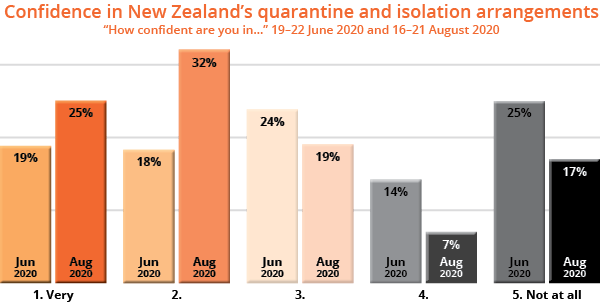
New Zealanders Back Quarantine Czar: New Zealanders are backing their prime minister even more in regard to quarantine and isolation, despite needing to step back into partial lockdown—some, no doubt, because they were impressed by the appointment of Dr Megan Woods as her quarantine czar. However, the 57% of respondents who rated their confidence in the quarantine and isolation arrangements 1 or 2 out of 5 compares poorly with the 75% who conferred that rating on the government’s overall response to covid-19. chart Mahurangi Magazine | data The Spinoff–Stickybeak
Praying for more testing times Rather than shovelling more money into motorways, by way of covid-19 spending, a far higher priority is to build a fit-for-purpose national isolation facility and adjacent national testing laboratory—particularly for saliva testing. Anybody who seeks to be tested for covid-19 should be given every encouragement to do so. A runny nose may simply be cold-air-induced rhinorrhea, but every test conducted lessens the potential for asymptomatic, or mildly symptomatic spreaders to go undetected. Then, all positive test swabs should be genetically sequenced, which could very well reduce the frequency that lockdowns need to be imposed.
In several years’ time, post-covid-19, the purpose-built isolation facility could be put to numerous public-health uses, including the saving of hundreds of lives every winter, from seasonal influenza, and for the 130 per year for whom Rheumatic fever proves fatal—as a stopgap until wholesome, affordable housing is addressed, at scale.
Note on nuclear Aotearoa might enjoy vast renewable energy resources, but it is part of a world that needs every immediately deployable, strategic zero-carbon project to be expedited. New Zealand’s primary connection to that world urgently needs to be other-than-by air. Powering air travel, without fossil-fuel largess, would represent an absurdly extravagant deployment of so-called renewables. On 12 August, nuclear power adult-in-the-room Dr James Hansen gave a shout-out to the newly launched Good Energy Collective.
Achilles’ Heel of current strategies The following are the two concluding paragraphs of Asymptomatic Transmission, the Achilles’ Heel of Current Strategies to Control Covid-19, published 28 May 2020:
Ultimately, the rapid spread of Covid-19 across the United States and the globe, the clear evidence of SARS-CoV-2 transmission from asymptomatic personsArons MM, Hatfield KM, Reddy SC, et al. Presymptomatic SARS-CoV-2 infections and transmission in a skilled nursing facility. N Engl J Med. DOI: 10.1056/NEJMoa2008457, and the eventual need to relax current social distancing practices argue for broadened SARS-CoV-2 testing to include asymptomatic persons in prioritized settings. These factors also support the case for the general public to use face masks when in crowded outdoor or indoor spaces. This unprecedented pandemic calls for unprecedented measures to achieve its ultimate defeat.

Becoming Wise Before the Event: Despite now experiencing 17 pandemics—and 6 of those since 2002—the world was found to be pitifully ill-prepared for when, with predictable unpredictability, this current pandemic manifested. Preparing for the potentially far-deadlier effects of anthropogenic global heating, as well as being an inescapable existential imperative, can, simultaneously, better equip humanity to respond to epidemics, and prevent more becoming pandemics. Here, the initially all-but-imperceptible case-infection rates displayed for India and Indonesia were grave indicators of governments in desperate denial of their countries’ now-destined roles in the raging pandemic—and early exemplar Singapore demonstrates the ruinous consequences of neglecting its most vulnerable workers. Nigeria, however, scams all 207 million of its citizens, by testing fewer than 1% of them, thus hiding the appalling impact of the pandemic there. Australia long-since lost her battle to keep within cooee of covid-19-test-kit-exporter extraordinaire South Korea’s standout response. Aotearoa, meantime, has flat-lined in a good way. All countries’ infection rates are under-reported, some because a few cases, particularly early in the pandemic, are misdiagnosed, but in other countries monstrously, due to dysfunction and/or lack of transparency. The diameter of each line on this graph is proportional to the country’s population. graph Mahurangi Magazine | data Our World in Data 12 November 2020
Join FluTracking now and help prevent future pandemics…
Salutary Lesson in Seasonal Influenza: Physical distancing has also paid dividends in reducing the annual toll extracted by flu that, despite its deadliness, is treated as an inconvenience rather than the killer it is, particularly of the very young, the elderly, and the pregnant—“On average, approximately 400 deaths are attributed to influenza and its complications annually.” covid-19 provided the opportunity to begin collecting flu-symptom data earlier than was done 2018–2019. graph Department of Health Australia | Ministry of Health Aotearoa | labels Mahurangi Magazine
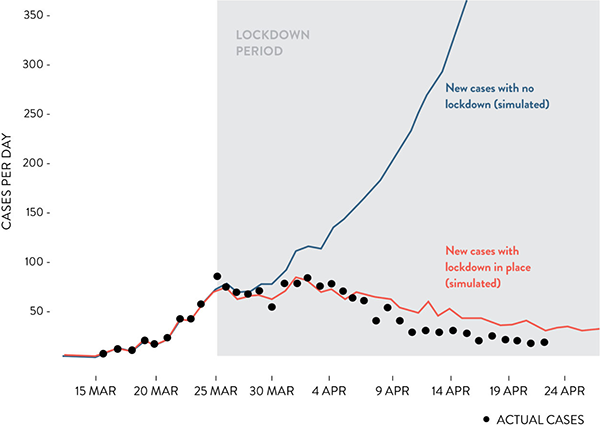
New Zealand’s Altered Future: Moving nine days faster than Ireland, and more emphatically physically distancing, Aotearoa has avoided Ireland’s near vertical trajectory—until the middle of May—of reported covid-19 cases. Ireland’s prime minister then donning his sweats was perhaps great optics, but responding to, for example, fellow general practitioner Dr Marcus de Brun, or to nursing-home representatives more than seven weeks earlier, would have constituted a far more heroic course of action. Aotearoa, for its own survival, now needs to convince the world to alter its determinedly fossil-fuelled future. chart New Zealand Geographic | Te Pūnaha Matatini
